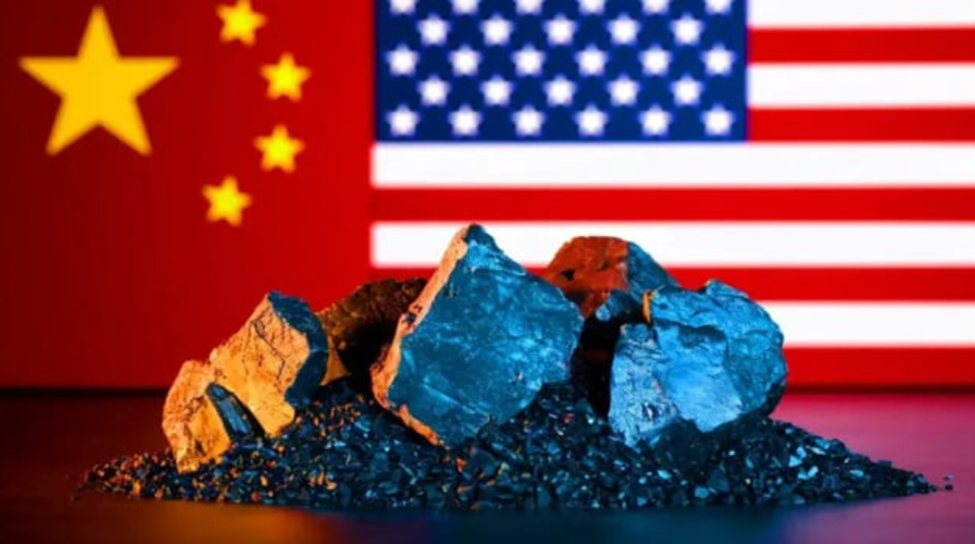Beijing’s Rare Earth Dominance Rewrites the Rules of Trade with US
- InduQin
- 22 hours ago
- 3 min read

China’s dominance of the rare earths supply chain gives it major geopolitical leverage, especially in trade tensions with the U.S. Despite renewed Western investment, alternative supply routes will take years to develop. China’s export controls, vast processing capacity, and technological lead keep global industries dependent, leaving Washington and allies racing to reduce reliance while Beijing maintains strategic control.
China’s decades‑long strategy to command every stage of the rare earths supply chain has transformed the minerals into one of its most effective tools in the ongoing trade tensions with the United States. From mining and refining to innovation and export controls, Beijing’s grip over the 17 strategically crucial elements now shapes economic and geopolitical calculations around the world.
Rare earths—essential in advanced weaponry, guidance systems, radar arrays, smartphones, electric vehicles, and medical technologies—are expected to become even more indispensable in the years ahead. Analysts caution, however, that Western efforts to build competing supply routes will require significant time and investment before showing meaningful results.
A recent visit by AFP to Ganzhou, the southeastern hub known for its deposits of “heavy” rare earths such as yttrium and terbium, offered a rare glimpse into China’s tightly controlled industry. Despite constant monitoring by unidentified escorts, reporters observed a steady flow of trucks entering and exiting one of the region’s major mines, alongside busy refiners and processing facilities. The area is undergoing rapid expansion, including the construction of large new headquarters for China Rare Earth Group, one of two major state-owned players that dominate the sector after years of government-driven consolidation.
According to Heron Lim, an economics lecturer at ESSEC Business School, global supply disruptions this year have pushed countries to accelerate investment in rare earth extraction and processing. He argues that although these efforts may yield long-term strategic benefits, they won’t address immediate vulnerabilities.
China’s sweeping export restrictions announced in early October underscored those vulnerabilities, rattling manufacturers worldwide and raising alarms in Washington. The move came amid renewed friction between the two economic giants, now locked in a second-term trade confrontation under President Donald Trump. At a high-profile meeting in South Korea, Trump and Chinese President Xi Jinping negotiated a one-year pause in their tariff battle—an agreement that temporarily stabilizes access to rare earths and other critical minerals. Observers widely interpreted the outcome as a diplomatic win for Beijing.
Lim notes that rare earths will likely remain central to future negotiations: China has shown a willingness to use its dominance as leverage to keep the United States engaged at the bargaining table. Meanwhile, companies that depend on these minerals face heightened uncertainty as global supply remains fragile.
The United States once led the world in rare earth production, with California’s Mountain Pass mine serving as the backbone of global supply during the Cold War. But concerns over environmental damage and reduced geopolitical urgency in the late 20th century led Washington to scale back its involvement. China subsequently stepped into the vacuum, and today it controls roughly two-thirds of worldwide rare earth mining and close to 90 percent of global refining capacity.
Beyond sheer production, China holds a commanding lead in patents and enforces tight controls on processing technologies—further entrenching its position and limiting the ability of other nations to catch up. Amelia Haines, a commodities analyst at BMI, warned at a seminar this month that the United States and the European Union remain heavily dependent on Chinese rare earth imports, exposing critical industries to significant risk. She expects these vulnerabilities to accelerate global efforts to secure alternative supplies.
Washington has already committed substantial funding to revive domestic mining and processing, part of a push to establish a fully American “mine-to-magnet” supply chain by 2027. The U.S. has also intensified collaboration with allied nations. Last month, Trump signed an $8.5 billion agreement with Australian Prime Minister Anthony Albanese focused on developing critical mineral projects. Additional cooperation deals with Japan, Malaysia, and Thailand signal a broader regional approach to reducing dependence on China.
Although rare earths have become a headline issue in recent years, U.S. officials have been aware of the strategic risk for more than a decade. A 2010 maritime dispute between China and Japan resulted in Beijing halting rare earth shipments to Tokyo—an event that first revealed the geopolitical weight of China’s dominance. The Obama administration responded with calls to strengthen domestic resilience, yet 15 years later, China remains firmly entrenched as the world’s rare earth superpower.
As global demand surges and geopolitical tensions continue, the race to diversify rare earth supply chains is intensifying. But for now, Beijing’s leadership in this critical sector continues to give it significant sway over the technologies—and the politics—of the future.







Comments